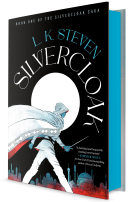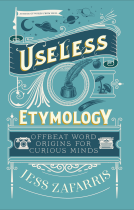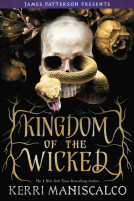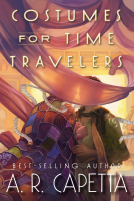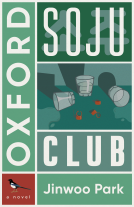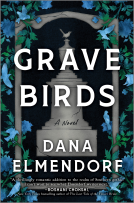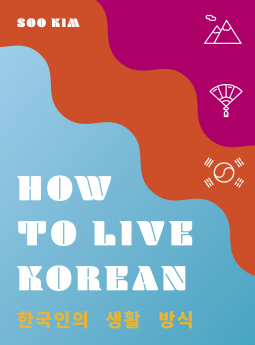
How to Live Korean
by Soo Kim
This title was previously available on NetGalley and is now archived.
Send NetGalley books directly to your Kindle or Kindle app
1
To read on a Kindle or Kindle app, please add kindle@netgalley.com as an approved email address to receive files in your Amazon account. Click here for step-by-step instructions.
2
Also find your Kindle email address within your Amazon account, and enter it here.
Pub Date Nov 17 2020 | Archive Date Dec 28 2020
Quarto Publishing Group – White Lion | White Lion Publishing
Talking about this book? Use #HowtoLiveKorean #NetGalley. More hashtag tips!
Description
How to Live Korean takes a deep-dive into Korean culture, unpacking what it means to be Korean in all its forms and uncovering the way the locals think, what they enjoy getting up to and who they do it with.
Whether it’s Korean movie Parasite sweeping the Oscars, the explosion of interest in K-pop, Blackpink becoming the world's biggest girl band, the dominance of the global smartphone market, foodies going crazy for bibimbap and kimchi or the incredible hype around K-beauty products – Korea is having a moment. But how much do you know about the real Korea; the locals' take on their amazing country?
That's where this illuminating culture guide comes in, shining a light on Korea’s compelling history and stunning geography, its unique customs and the quirks of daily life. The mainstays of Korea’s vibrant cultural life and style are covered in detail, giving you the lowdown on the country's burgeoning film industry, Korean's unique take on fandom, the quirky fashion scene and the innovative hubs for art and design.
If you ever have wanted to learn how to date like a Korean, know where the locals hang out in Seoul, honeymoon like Korean newlyweds, discover the correct way to eat Korean food or use the art of nunchi to improve your emotional intelligence, this insider’s guide to the heart and soul of Korea is not to be missed.
From the How To Live... series of insightful guides to some of the most intriguing cultures and locations on the planet, other books available include How To Live Japanese, How To Live Icelandic and How to Live North.
Available Editions
| EDITION | Other Format |
| ISBN | 9780711257092 |
| PRICE | $30.00 (USD) |
| PAGES | 224 |
Featured Reviews
How to Live Korean was a really enjoyable read from start to finish. The book covers everything from overviews of Korean history and food to commentary on Korean family values and culture, as well as a look at the country's regions and attractions. Some of the information I knew, but some was new to me, such as why you shouldn't buy shoes for your significant other! I started teaching myself Korean earlier this year, shortly after becoming addicted to watching all the K-dramas on Netflix, and I am keen to learn more about the country and its people. This book certainly fed into my interest and I liked it so much I plan to get a copy to keep on my bookshelf.
 Melanie M, Reviewer
Melanie M, Reviewer
This was really fun since I am hugely fascinated by Korean culture, learning the language and planning (whenever it may be possible) to return to Korea after a long absence to show my family around.
 Abby S, Reviewer
Abby S, Reviewer
I really enjoyed learning about SouthKorea from this lovely book.Beautiful illustrations and photography.A look at Korean history traditions schools food.Loved traveling and taking a tour of the country while sitting in my home.#netgalley #how to live Korean.
 Meike S, Media/Journalist
Meike S, Media/Journalist
It's of course slightly silly that the author claims to speak for all Koreans, but still, this little book is a fun, informative and beautifully designed introduction to (mainly South) Korea. Illustrated with some paintings and many photographs, the text gives an overview of Korean history, geography, politics, popular travel destinations, famous Koreans, culinary delights, society, social norms and customs as well as phenomena like K-Pop and K-Beauty. The outcome is entertaining and informative, although, due to the text's brevity, people who aim to really learn about the country in all its diversity and nuance need to pick up non-fiction books devoted to singular aspects Soo Kim only has the time and space to hint at.
Full disclosure: I can't possibly judge whether the viewpoints presented in the book are correct, but the text certainly motivated me even more to visit South Korea. For people who want to spend two hours immersing themselves in short texts and images of Korea, this light read is just right.
 Media/Journalist 188366
Media/Journalist 188366
How to Live Korean is a beautifully presented guide to Korea’s history, customs, culture and economy.
It opens with an overview of Korea’s ancient history and later profiles the Japanese occupation, the North-South split, national uprisings and economic growth. Although the book includes some information and photos about North Korea, I found it most interesting to learn something of Korea’s history outside of its relationship with North Korea. However, it was moving to see photos of the gorgeous Pohyonsa temple. It’s easy to forget sometimes that North Korea is also home to many cultural relics and fine buildings.
The modern history heavily focuses on South Korea’s successful industries, especially technology, film and music. It describes the influence of large conglomerates run by a family (chaebol). This will give you a better grasp of news reports about abuses of power, corruption monopolistic behaviour and government ties.
Although some of these matters are very serious, most of the book is written in a breezy, conversational manner. The large photos, illustrations and charts are so nicely done that this book leaps over from travel guide to coffee table book. It includes a few light hearted lists such as 10 Things You Never Knew About South Korea (It has 3,000 islands!) and 10 Fascinating Koreans. The geography and general travel tips are useful but a bit similar to what you’d likely find in other popular travel guides. Common phrases, slang and proverbs are included but with a twist. There’s no ‘where’s the toilet?’ but rather, ‘continue to work hard’ as a way to say something like have a nice day or a phrase for how to call someone out on acting arrogant.
What separates How to Live Korean from other travel guides is its analysis of ‘The Korean Spirit.’ The descriptions of how different generations view family duty, relationships, friendships and social life would be incredibly helpful for anyone wanting to live in Korea or make new friends. Dating, anniversaries and public displays of affection are covered briefly, although this section might be the most useful for foreigners wishing to avoid accidental embarrassment. It’s cute to see the photos of couples dressing alike and I honestly had a difficult time imagining living in a place where a 100 day anniversary is a thing. The class system is discussed quite a bit in the marriage and wedding sections. Most of these sections are written from the perspective of Koreans thinking about other Koreans. The book does not address relationships between Koreans and foreigners. Additionally, it does not share any information about how a traveller might be treated in Korea based on nationality or ethnicity.
The nature of this book requires generalisations, but the author acknowledges that “How strongly they resonate in any given Korean household differs from family to family.” Here it describes Korea’s unique type of loving-kindness known as jeong. The explanations of the responsibilities and expectations placed on oldest sons, plus the above descriptions of chaebol structure explained some questions I had about South Korean romance dramas and the infamous 2014 ‘nut rage incident.’
Although this book is light on etiquette, it has some very good tips on drinking around your elders and how to behave around your elders. Elders in this sense means someone older, not necessarily elderly. I could have used an explanation of how to determine someone’s age so you know how to pour drinks or what phrases to use. Is it polite to ask a woman her age? On a similar note, the book includes a section on K Beauty, with Top Korean Skincare tips (Slap your face!) and Secrets for a Healthy Life.
I was unfamiliar with the concept of emotional intelligence referred to as ‘nunchi.’ “In a modern age of health enthusiasts obsessed by self-awareness and mindfulness of the inner self, nunchi is an awareness of all things outward, including the external self and how you fit into the surrounding situation.” I’d like to read more about this subject as the ability to ‘read a room’ doesn’t exist solely in Korea, but here it’s presented as being a unique national trait based on non-verbal cues.
I especially loved the section on Korean homes and the different perceptions of status. “Owning a swanky apartment or spacious home in an urban setting is seen more as living the dream in Korean society, than owning a house in the countryside, as many urban-dwellers in Western societies might aspire to achieve.” It also introduces the concept of a officetel, which seems to be something like a studio apartment with a workspace originally stemming from legally ambiguous repurposed office space into housing stock.
How to Live Korean is an ideal gift for armchair travellers and K-pop enthusiasts. Due to its useful summaries of art, hobbies, film and music, it’s a wonderful jumping off point into exploring other areas of Korean culture.
This book was provided by the publisher for review.
 Danielle P, Reviewer
Danielle P, Reviewer
Korean culture has been spreading its wings well beyond Korea in recent years. From the Oscar winning film Parasite to Kpop sensations BTS, Korea has well and truely been put onto the world map. This international recognition will undoubtedly spark an interest into not just Korea film and music, but into Korea as a country. That is where How To Live Korean comes in the bridge the gap.
No matter where your interest in Korea originated from, How To Live Korean will undoubtedly give you more of what drew you to the country in the first place. A multitude of aspect of Korean life are explored, from why Koreans eat primarily a vegetable-based diet to where they love to travel to to go on holiday.
Not only are you get to see what Korea is like from a Koreans perspective, you also get a selection of recipes for you to bring Korea into your home. From Kimchee Jjigae to Oheemoochim, a few easy to follow recipes are provided for your tastebuds.
If you are interested in travelling to Korea when you are able to, then How To Live Korean is a great place to start.
If you’re interested in learning more about South Korea, How to Live Korean is a great place to start. From an overview of thousands of years of Korean history to the latest in technology and creative arts, the author takes you on a tour of Korean life that includes food (with recipes!), beauty and fashion, relationships, and society. Vivid photographs pop with color, showing the wide variety of life in South Korea from traditional to ultra-modern. Although it’s not meant as a tourist guide, How to Live Korean points out places and sights worth including in any trip.
Korean meals usually include small side dishes called banchan (반찬), which come in a wide variety and are meant to be shared. How to Live Korean is like that: a wonderful sampling of many different topics, with enough explanation to give you an enjoyable taste of each, and knowledge that you’ll want to share..
 Elif A, Reviewer
Elif A, Reviewer
Ever since I've watched Hyori's Bed & Breakfast on Netflix, I'm in love with Korean culture and yes, Korean cuisine. This book was so easy to read, and I learned enough on many topics. In parts, I was shocked, and in parts, I felt I wanted to be a Korean. Would be recommending this to anyone who wants to learn a bit about Korea.

